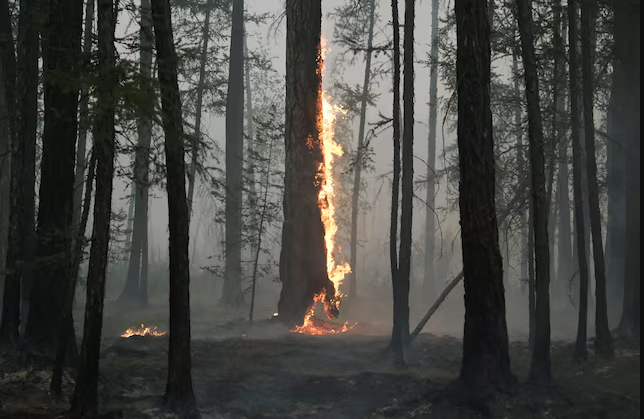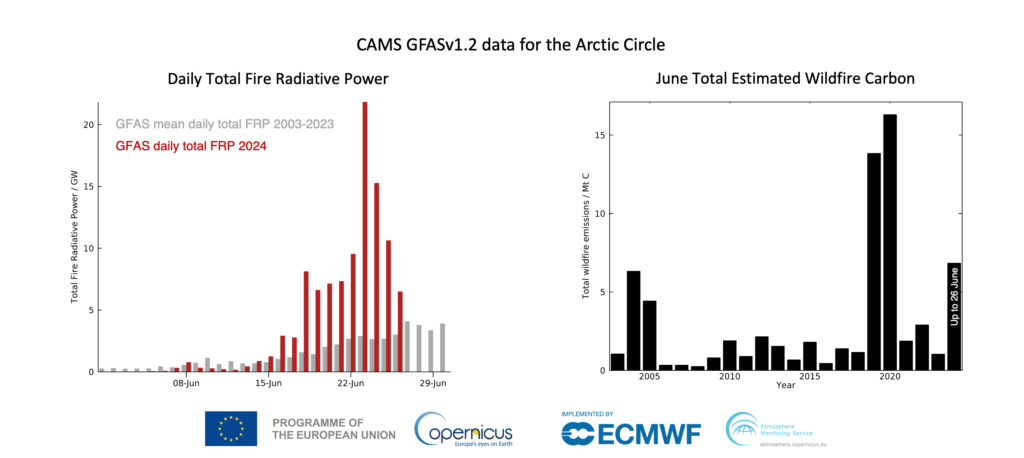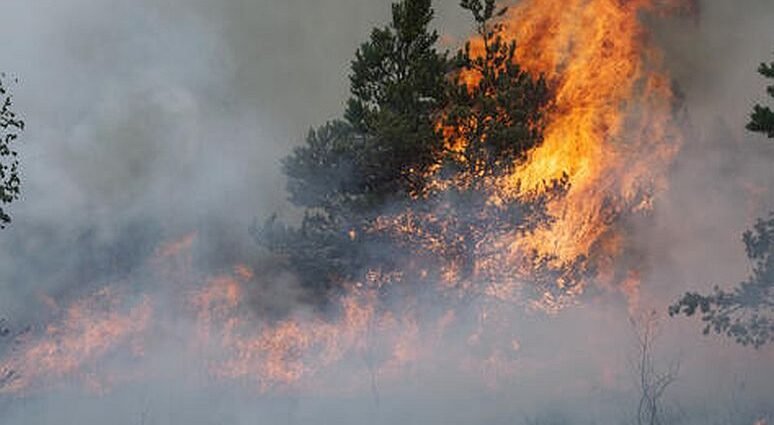A stark warning from Europe: Wildfires raging above the Arctic Circle this June have unleashed the third highest carbon emissions on record for this time of year in two decades.

The culprit? Rising temperatures driven by climate change. Warmer conditions are pushing wildfires north. These fires scorch boreal forests and tundra, ecosystems that store massive amounts of carbon in organic soils. As the fires rage, they release this trapped carbon back into the atmosphere as greenhouse gases, accelerating global warming even further.

Data from the Copernicus Atmospheric Monitoring Service (CAMS) paints a concerning picture. Arctic wildfires spewed a whopping 6.8 megatonnes of carbon into the atmosphere this month alone. This is surpassed only by the devastating fires of June 2019 and June 2020, which released nearly double the emissions.
Ground zero for these fires is Russia’s Far North, specifically the Sakha Republic. This region is no stranger to this kind of fires – in 2021, nearly 19 million hectares of forests were destroyed. But the northeastern Arctic has seen the most dramatic increase in extreme wildfires over the past two decades.

“While Arctic fire emissions have been relatively stable for the past three summers,” says Mark Parrington, a senior scientist at CAMS, “these recent fires erupt after periods of warm and dry conditions, mirroring the large wildfires of 2019 and 2020.” With July and August typically witnessing the peak of wildfires in the Northern Hemisphere, the situation could worsen.
Straddling the Arctic Ocean, Sakha is no stranger to harsh weather. The smoke from the 2021 wildfires even reached the North Pole, a first in recorded history. As of June 24, over 160 wildfires ravaged the Republic, affecting nearly 460,000 hectares.
Reference- Reuters article, National Geographic, BBC, Russia’s TASS news agency, Copernicus Atmospheric Monitoring Service (CAMS)






